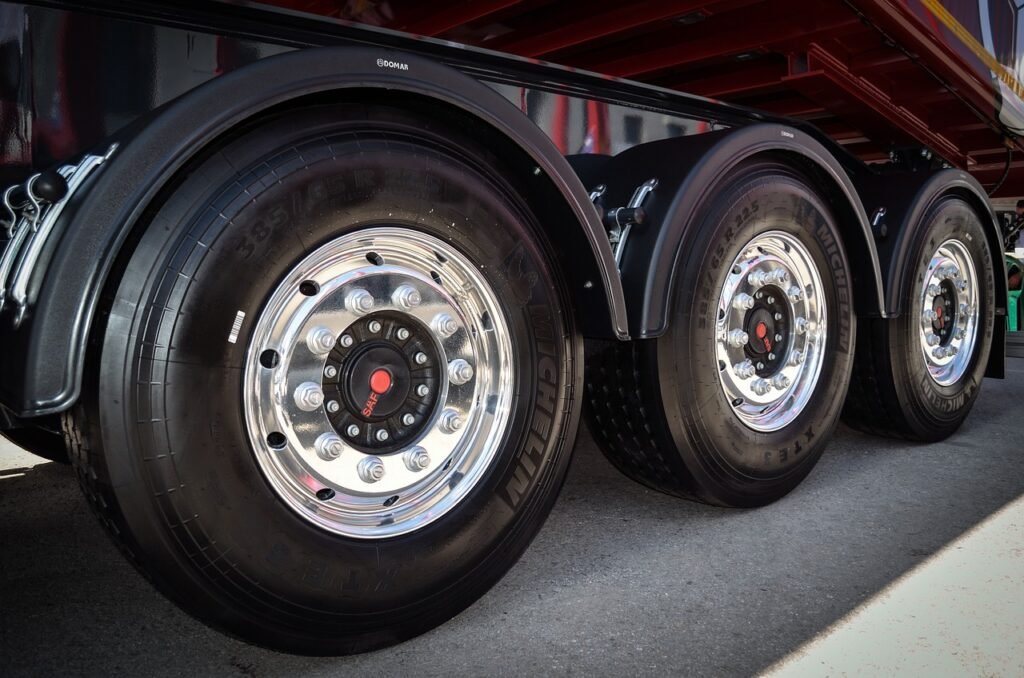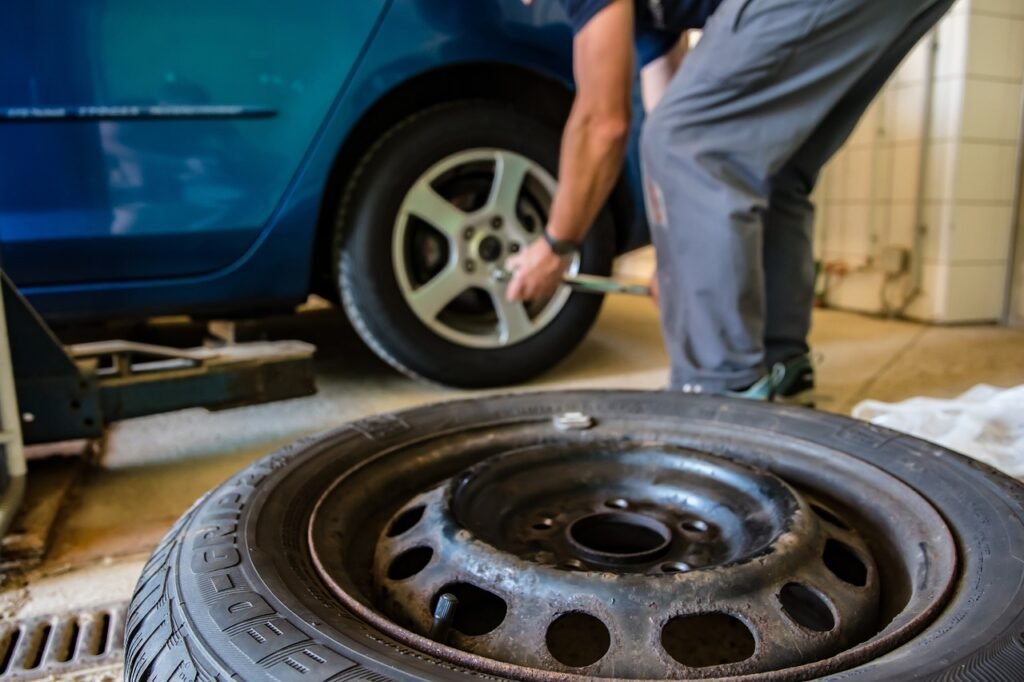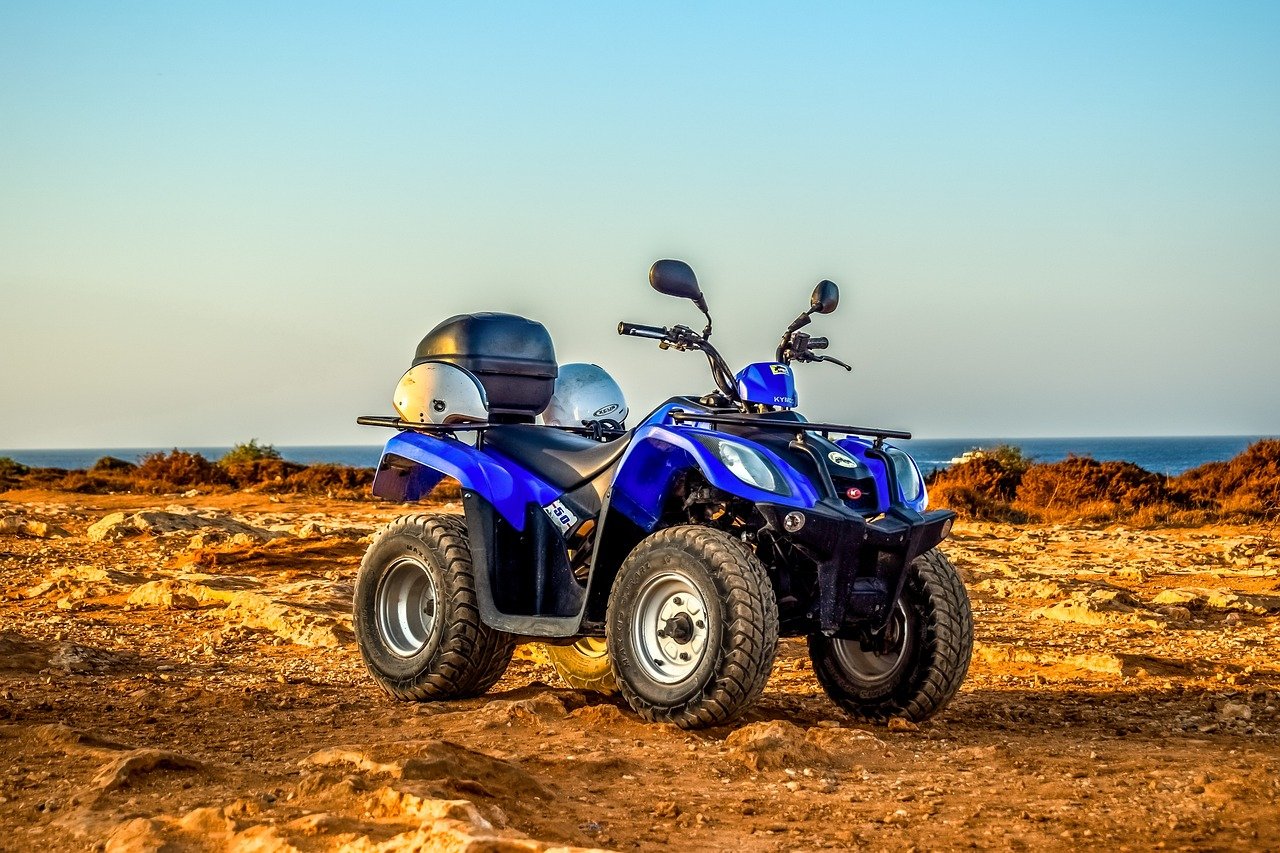Immerse yourself in thrilling off-roading adventures with the help of the perfect tires. Whether you’re a seasoned ATV enthusiast or a beginner looking to explore the great outdoors, selecting the right tires can enhance your off-roading experience to new heights. With a wide range of options available, it can be daunting to know which tires are best suited for your ATV off-roading needs. In this article, we’ll guide you through the top tire choices that will maximize your off-roading adventures, ensuring traction, durability, and overall performance. So get ready to conquer any terrain with confidence and have the ride of your life!

This image is property of pixabay.com.
Choosing the Right Tire Type
If you’re an off-roading enthusiast, you know that having the right tires can make all the difference in your adventures. Choosing the right tire type is crucial, as it determines the performance, traction, and durability of your vehicle on different terrains. To make an informed decision, you need to identify your off-roading needs and understand the different tire types available.
Identifying your off-roading needs
Before diving into the world of off-road tires, take a moment to consider your individual off-roading needs. Are you an occasional off-roader who enjoys weekend adventures on light trails, or are you a hardcore enthusiast seeking rough and challenging terrains? Identifying your off-roading preferences and the type of terrain you often tackle will help narrow down your tire options.
Understanding the different tire types
Once you’ve identified your off-roading needs, it’s time to understand the different tire types available. The two main categories of off-road tires are all-terrain (AT) and mud terrain (MT) tires. All-terrain tires are designed to provide a good balance between on-road and off-road performance. They offer excellent traction on various terrains, including rocks, sand, and light mud. On the other hand, mud terrain tires are specifically designed for extreme off-road conditions where maximum traction is required. They excel in muddy and rocky terrains but may not perform as well on paved roads.
Considering all-terrain vs. mud terrain
When choosing between all-terrain and mud terrain tires, consider the type of off-roading you primarily engage in. All-terrain tires are a popular choice for many off-roaders due to their versatility. They offer a smooth and quiet ride on the pavement while still providing sufficient grip off-road. If your adventures involve a mix of on-road and off-road driving, all-terrain tires may be the right choice for you.
On the other hand, if you frequently find yourself tackling muddy trails or challenging rock climbs, mud terrain tires are worth considering. They have aggressive tread patterns and deep lugs that provide exceptional traction in extreme off-road conditions. Keep in mind that mud terrain tires may produce more road noise and have a shorter tread life compared to all-terrain tires. However, their ability to tackle intense off-road challenges makes them a top choice for serious off-roaders.
Tire Size and Width
After determining the right tire type for your off-roading adventures, it’s time to consider tire size and width. The size of your tires directly affects the performance and clearance of your vehicle, while the width plays a crucial role in traction and stability.
Understanding tire size measurements
Tire size measurements might seem confusing at first, but breaking them down simplifies the selection process. The three main measurements you’ll encounter are tire diameter, section width, and aspect ratio.
The tire diameter is the total height of the tire from one edge to the other, typically measured in inches. Section width refers to the width of the tire across its widest point, while the aspect ratio represents the height of the sidewall as a percentage of the section width. These three measurements, combined with your vehicle’s recommended tire size, will guide you in choosing the right tires for your off-roading needs.
Evaluating the ideal width for your off-roading
When it comes to tire width, a general rule of thumb is that wider tires provide better traction while narrower tires offer greater maneuverability. For off-road adventures, wider tires are usually preferred due to their increased surface area, which improves grip and stability. However, it’s important to consider your vehicle’s specifications and limitations, as wider tires may rub against fenders or suspension components.
Affect of tire size and width on performance
The size and width of your tires can significantly impact the performance of your off-road vehicle. Larger tires with increased diameter offer better ground clearance, allowing you to navigate rough terrains with ease. Additionally, wider tires provide enhanced stability, reducing the risk of rollovers on uneven surfaces.
However, it’s crucial to strike a balance between tire size and your vehicle’s overall performance. Oversized tires can strain your vehicle’s drivetrain, leading to decreased acceleration, reduced fuel efficiency, and potential damage to other components. In contrast, undersized tires may hinder your off-road capabilities and compromise traction. Understanding your vehicle’s limitations and consulting with professionals can help you find the optimal tire size and width for your off-roading adventures.

This image is property of pixabay.com.
Tire Tread Pattern
When it comes to off-road tires, the tread pattern plays a vital role in determining traction, maneuverability, and performance on different terrains. Understanding the importance of tire tread pattern and choosing the right one for your needs is essential for maximizing your off-roading experiences.
Importance of tire tread pattern
The tread pattern is the pattern of grooves, lugs, and blocks on the surface of the tire. Its design directly influences the tire’s ability to grip the road or trail, disperse water and mud, and provide traction in various conditions. A proper tread pattern enhances off-road performance by biting into loose surfaces, preventing slippage, and ensuring control and stability.
Analyzing aggressive vs. mild tread patterns
Off-road tire tread patterns can be categorized into aggressive and mild patterns. Aggressive tread patterns typically feature large, deep lugs or blocks with sizable voids between them. These patterns are designed to dig into soft surfaces like mud, sand, or deep snow, providing maximum traction. However, aggressive tread patterns may sacrifice on-road performance, producing more noise and compromising handling and fuel efficiency.
In contrast, mild or less aggressive tread patterns feature smaller blocks and shallower voids. These patterns are ideal for all-terrain tires as they offer a smoother and quieter ride on the pavement while still providing sufficient traction off-road. Additionally, mild tread patterns tend to have longer tread life and better fuel efficiency compared to aggressive patterns.
Choosing the right tread pattern for your terrain
Choosing the right tread pattern depends on the type of terrains you frequently encounter during your off-roading adventures. If you primarily tackle mud, rocks, and challenging off-road conditions, an aggressive tread pattern is recommended. The large lugs and deep voids will help you power through these obstacles with enhanced grip and control.
However, if your off-roading includes a mix of terrains, such as gravel, sand, and light mud, a mild tread pattern may be more suitable. It provides a good balance between off-road traction and on-road performance, allowing you to enjoy a comfortable ride without sacrificing too much in terms of control and fuel efficiency.
Sidewall Strength and Construction
Off-roading can be demanding on tires, especially when navigating over rough terrains or encountering unexpected obstacles. That’s where sidewall strength and construction come into play as they contribute to the tire’s ability to withstand abuse and maintain shape. Understanding the benefits of reinforced sidewalls and the importance of ply ratings and load capacity is crucial when choosing off-road tires.
Benefits of reinforced sidewalls
Reinforced or stronger sidewalls are a desirable feature in off-road tires as they provide enhanced protection against punctures and damages. When driving off-road, rocks, logs, and other debris can pose a threat to the sidewalls. Reinforced sidewalls are more resistant to cuts, impacts, and abrasions, ensuring durability and longevity of the tire.
Understanding ply ratings and load capacity
Ply ratings or the number of layers in the tire carcass is another aspect to consider when evaluating sidewall strength. A higher ply rating generally indicates a stronger tire. Additionally, paying attention to the load capacity is important to ensure your tires can handle the weight of your vehicle and any additional load it may carry during your off-roading adventures.
Manufacturers assign load capacity ratings to tires, indicating the maximum weight each tire can safely support. It’s crucial to select tires with a load capacity suitable for your vehicle and any additional cargo or equipment you plan to carry during your off-road adventures.
Finding the right balance for your adventure
When it comes to sidewall strength and construction, finding the right balance is key. While reinforced sidewalls offer greater protection, they can also be stiffer, affecting ride comfort. Consider your off-roading needs and strike a balance between sidewall strength and comfort. If you primarily tackle rugged terrains with sharp rocks and debris, opt for tires with reinforced sidewalls. However, if your off-roading is a mix of rocky trails and everyday driving, tires with slightly less aggressive sidewall construction may offer a more comfortable ride without compromising durability.

This image is property of pixabay.com.
Tire Durability and Longevity
Off-roading can be a demanding and exhilarating activity, but it also puts your tires to the test. Evaluating tire compound and quality, considering puncture resistance, and maximizing the lifespan of your tires are crucial factors in ensuring durability and longevity during your off-roading adventures.
Evaluating tire compound and quality
Tire compound refers to the blend of materials used in the tire’s construction. The composition of the compound greatly affects the tire’s performance, including its ability to resist wear, maintain traction, and withstand extreme temperatures. Off-road tires often utilize a tougher compound to resist cuts, abrasions, and punctures.
When evaluating tire quality, it’s advisable to opt for reputable brands known for their commitment to quality and durability. Do thorough research and read customer reviews to gain insights into the performance and longevity of different off-road tires. Investing in high-quality tires may result in a higher upfront cost but can ultimately save you money in the long run by offering extended tread life and enhanced performance.
Considering puncture resistance
Off-road adventures are not without their fair share of puncture risks. Rocks, thorns, and other sharp objects can easily puncture a tire and leave you stuck in the middle of nowhere. To minimize the risk, consider off-road tires that specifically offer puncture resistance features. Some tires come equipped with reinforced sidewalls, additional layers, or even puncture-resistant compounds designed to resist damage and punctures.
Additionally, regular inspections and maintenance, such as removing lodged objects or repairing small punctures promptly, will help prevent further damage and extend the life of your tires.
Maximizing the lifespan of your tires
Proper care and maintenance can significantly increase the lifespan of your off-road tires. Regularly inspecting your tires for signs of wear, bulges, or punctures and promptly addressing any issues can help prevent unexpected blowouts or tire failures during your off-roading adventures.
Rotating your tires at regular intervals ensures even wear, maximizing their lifespan. Off-road driving can lead to uneven tire wear, and rotating them front to back and side to side helps distribute the wear more evenly.
Furthermore, maintaining the recommended tire pressure is essential for prolonging the life of your tires. Properly inflated tires not only ensure optimal performance and traction but also minimize the risk of irregular wear and heat buildup.
Balancing Traction and Control
One of the key considerations in off-roading tire selection is finding the right balance between traction and control. Achieving optimal traction on different terrains while maintaining control and maneuverability is crucial for a safe and enjoyable off-road experience.
Achieving optimal traction on different terrains
Off-roading often involves encountering various terrains, from rocky trails to loose sand or muddy paths. To ensure optimal traction, it’s important to select tires with tread patterns designed to excel in those specific conditions.
For loose or sandy terrains, tires with wider voids and larger lugs are recommended as they can dig into the surface and provide better grip. On the other hand, rocky terrains require tires with stiffer sidewalls and aggressive tread patterns to handle the uneven surfaces and provide maximum traction.
Maintaining control and maneuverability
While traction is of utmost importance during off-roading, maintaining control and maneuverability is equally crucial. Off-road tires with aggressive tread patterns tend to be noisier and can impact on-road handling and steering response. Therefore, striking the right balance between off-road capability and on-road performance is essential, especially if you use your vehicle for daily commuting as well.
Consider tires with a balance of aggressive and mild tread patterns. These tires will generally offer a smoother and quieter ride on pavement while still providing sufficient grip for off-road adventures.
Finding the right tire for your driving style
Every off-roader has their own driving style and preferences. Some enthusiasts prioritize extreme off-road performance, while others seek a more balanced tire that can handle a range of terrains. It’s important to match your tire selection with your individual driving style to ensure an enjoyable and safe off-roading experience.
If you gravitate towards extreme off-roading and don’t mind sacrificing some on-road comfort, tires with aggressive tread patterns and reinforced sidewalls are likely a good fit for you. However, if you value a smoother ride on pavement without compromising too much on off-road capability, consider tires with a more balanced tread pattern and sidewall construction.
Considerations for Tire Pressure
Tire pressure can greatly impact the performance and handling of your off-road vehicle. Adjusting tire pressure according to your terrain and understanding the impact on traction and comfort is crucial for a successful off-roading adventure.
Importance of adjusting tire pressure
One of the unique advantages of off-road tires is their ability to be aired down or filled with varying levels of air pressure based on the terrain. Lowering tire pressure improves traction by increasing the contact patch between the tire and the ground. This allows the tires to conform better to the irregularities of the terrain, providing enhanced grip and minimizing the risk of getting stuck.
On the other hand, increasing tire pressure can be beneficial when traveling on firm surfaces or to prevent damage to the tires and rims from sharp rocks or off-road obstacles. Higher tire pressure helps maintain better sidewall rigidity and reduces the risk of punctures.
Understanding the impact on traction and comfort
Tire pressure directly affects traction and comfort during off-roading. Lowering tire pressure provides a larger, softer contact patch, enabling the tires to conform to the terrain and improve traction. This can make a significant difference when navigating through mud, sand, or rocky surfaces.
However, it’s important to find the right balance. Overly low tire pressure can lead to sidewall damage, tire bead issues, and decreased fuel efficiency. It’s essential to monitor tire pressure during your off-roading adventures and adjust it according to the specific conditions you encounter.
Finding the right balance for off-roading
Finding the right balance for tire pressure depends on the terrain, vehicle weight, and the tire’s load capacity. Experimenting with different tire pressure settings during off-roading trips and seeking advice from experienced off-roaders or tire experts can help you determine the optimal tire pressure for your specific off-roading needs.
It’s important to note that tire pressure should be adjusted before hitting the off-road trails and readjusted once you return to regular driving conditions. Regularly checking your tire pressure and ensuring it matches the manufacturer’s recommendations for on-road driving is crucial for maintaining safety and tire longevity.
Budget and Value for Money
As with any purchase, budget plays a significant role in selecting the perfect off-roading tires. Setting a budget, evaluating the cost vs. performance ratio, and finding the best value for your money are important factors to consider.
Setting a budget for your off-roading tires
Before embarking on your tire selection journey, determine a budget that aligns with your preferences and financial capabilities. Off-road tires can vary greatly in price depending on the brand, quality, size, and specifications. Having a clear budget in mind will help narrow down your options and prevent overspending.
Evaluating the cost vs. performance ratio
While it may be tempting to opt for the most budget-friendly tire option, evaluating the cost vs. performance ratio is crucial. Keep in mind that spending a little extra on quality tires can often result in better durability, improved traction, and enhanced off-road performance. Investing in reliable and reputable brands known for their off-road capabilities can pay off in the long run.
Do your research by reading reviews, comparing prices, and assessing the features offered by different tire models. Make an informed decision by considering both the price and the expected performance for your off-roading adventures.
Finding the best value for your money
Finding the best value for your money involves striking a balance between quality, performance, and cost. Opting for mid-range or premium off-road tires can potentially provide better performance, longer tread life, and improved durability, but it’s important to consider your individual needs and budget.
Additionally, keep in mind that a high-quality tire with advanced features may ultimately save you money in the long term by reducing the risk of punctures, minimizing tread wear, and offering better fuel efficiency.
Seeking Professional Advice
With the plethora of options available in the off-road tire market, seeking professional advice can be immensely helpful in making the right choice. Consulting experienced off-roaders, getting recommendations from tire experts, and utilizing online forums and reviews can provide valuable insights and guidance.
Consulting experienced off-roaders
Experienced off-roaders who have already tackled various terrains and tested different tire models can offer valuable advice based on their firsthand experiences. Seek out local off-roading clubs or online communities to connect with seasoned enthusiasts who can provide recommendations and share their expertise.
Getting recommendations from tire experts
Tire experts have extensive knowledge and experience when it comes to off-road tires. Visit local tire shops or reach out to specialized off-roading shops to consult with experts. They can assess your individual needs, consider factors such as terrain, vehicle specifications, and budget, and recommend the most suitable tire options for your off-roading adventures.
Utilizing online forums and reviews
Online forums, review websites, and social media groups dedicated to off-roading can be a treasure trove of information. Engage with fellow off-roaders, read reviews, and ask questions. People are often eager to share their experiences and insights, and this can help narrow down your options and make an informed decision.
Remember to take different opinions into account and consider the overall consensus when evaluating tire options. Ultimately, seeking professional advice can save you time and prevent costly mistakes when choosing the perfect off-roading tires.
Maintenance and Care for Off-Road Tires
To get the most out of your off-road tires and maximize their lifespan, proper maintenance and care are essential. Cleaning and inspecting tires after each adventure, rotating and balancing them regularly, and replacing worn-out tires in a timely manner will ensure optimal performance and safety during your off-roading adventures.
Cleaning and inspecting tires after each adventure
After each off-roading excursion, take the time to clean and inspect your tires. Remove any debris, mud, or other contaminants that may have accumulated on the tread or sidewalls. Use a soft brush or sponge along with mild soap to clean the tires thoroughly.
While cleaning, inspect the tires for any signs of damage, bulges, or cuts. Check the tread depth to ensure it’s within safe limits. Identifying and addressing issues promptly can prevent further damage and help you make informed decisions on tire replacements or repairs.
Rotating and balancing tires regularly
Regularly rotating and balancing your off-road tires is important for even wear and extended tread life. The front and rear tires wear differently due to factors such as weight distribution, steering, and braking forces.
Rotating the tires at recommended intervals helps distribute the wear more evenly, prolonging their lifespan. Additionally, balancing the tires ensures a smooth ride and minimizes vibrations. Take your vehicle to a trusted tire shop or mechanic to have the tires rotated and balanced according to the manufacturer’s recommendations.
Replacing worn-out tires in a timely manner
No matter how well you maintain and care for your off-road tires, they will eventually wear out. Regularly inspect the tread depth, paying attention to any signs of wear indicators becoming flush with the tread surface. When the tread depth reaches a certain point or if there are signs of significant wear or damage, it’s crucial to replace the worn-out tires.
Driving on bald or excessively worn tires greatly compromises traction, putting your safety at risk during off-road adventures. Investing in new tires when needed ensures optimal performance, grip, and control, keeping you safe during your off-roading expeditions.
In conclusion, choosing the right tires for your off-roading adventures is essential to maximize your experience and stay safe on rugged terrains. Consider your off-roading needs, understand the different tire types and their characteristics, and evaluate factors such as tire size, tread pattern, sidewall strength, durability, and maintenance requirements. Seeking professional advice and conducting thorough research will help you find the perfect off-road tires that strike the right balance between performance, reliability, and value for your money. With the ideal tires on your vehicle, you can confidently conquer any terrain and embark on memorable off-roading adventures.




